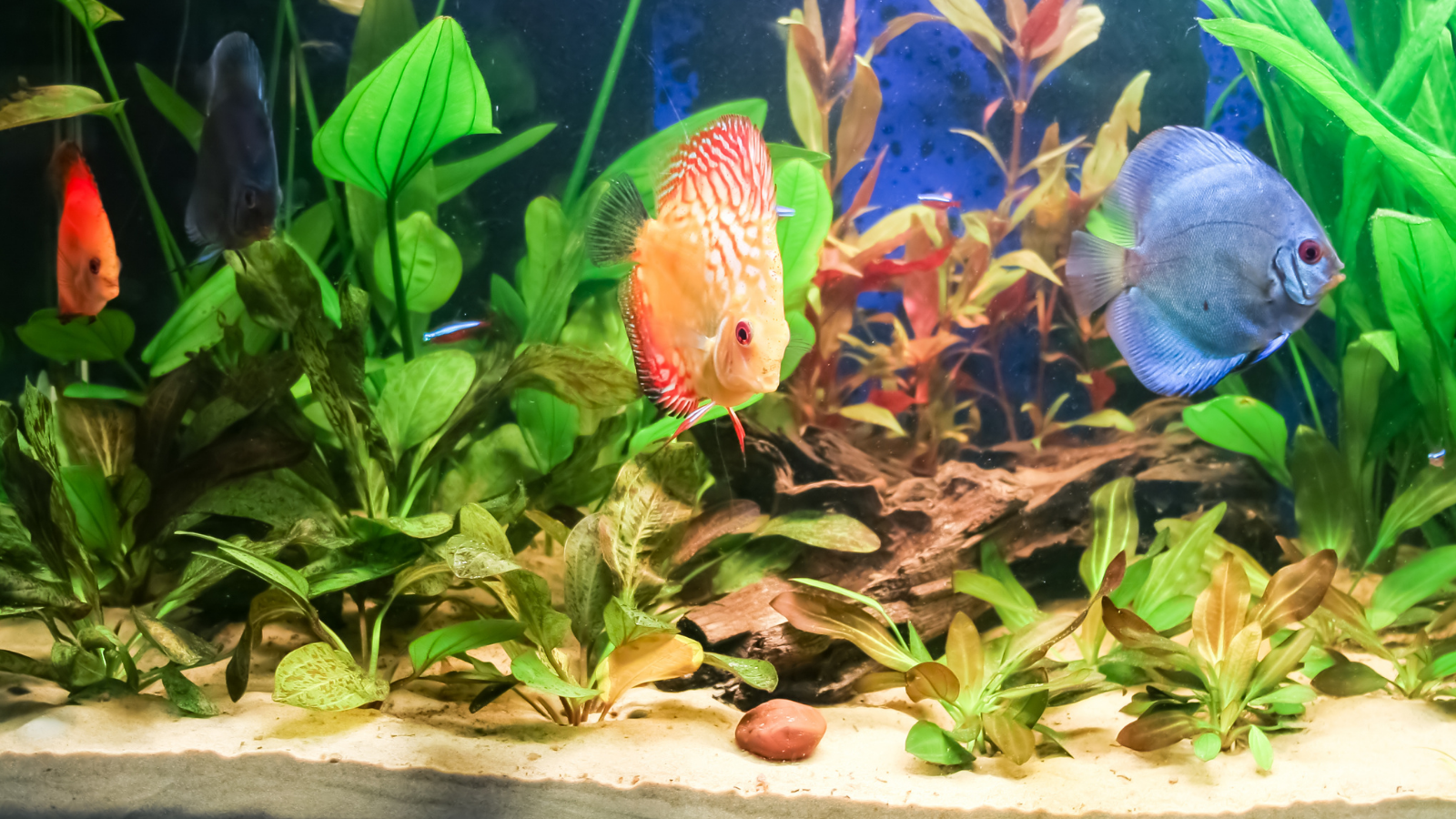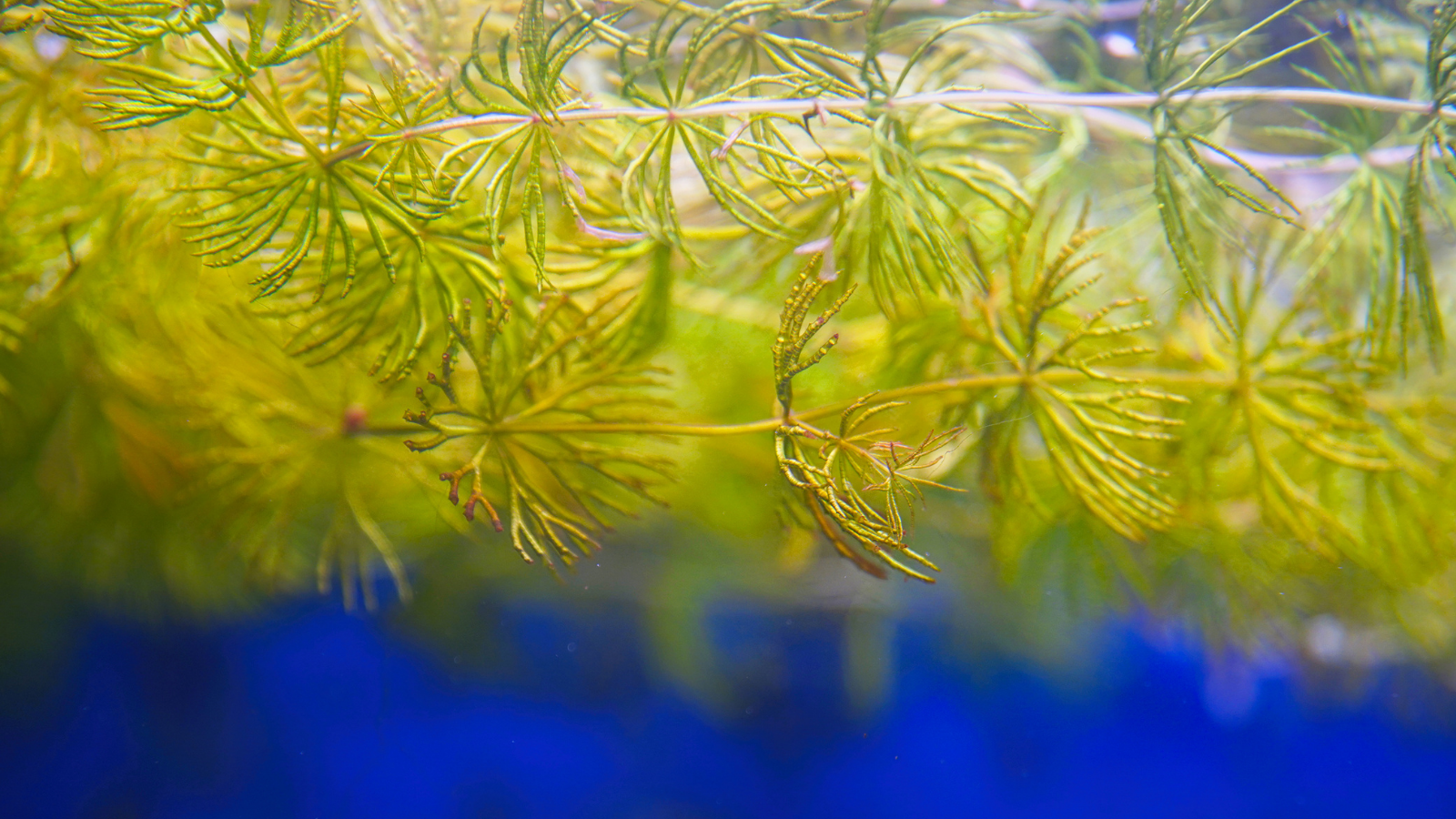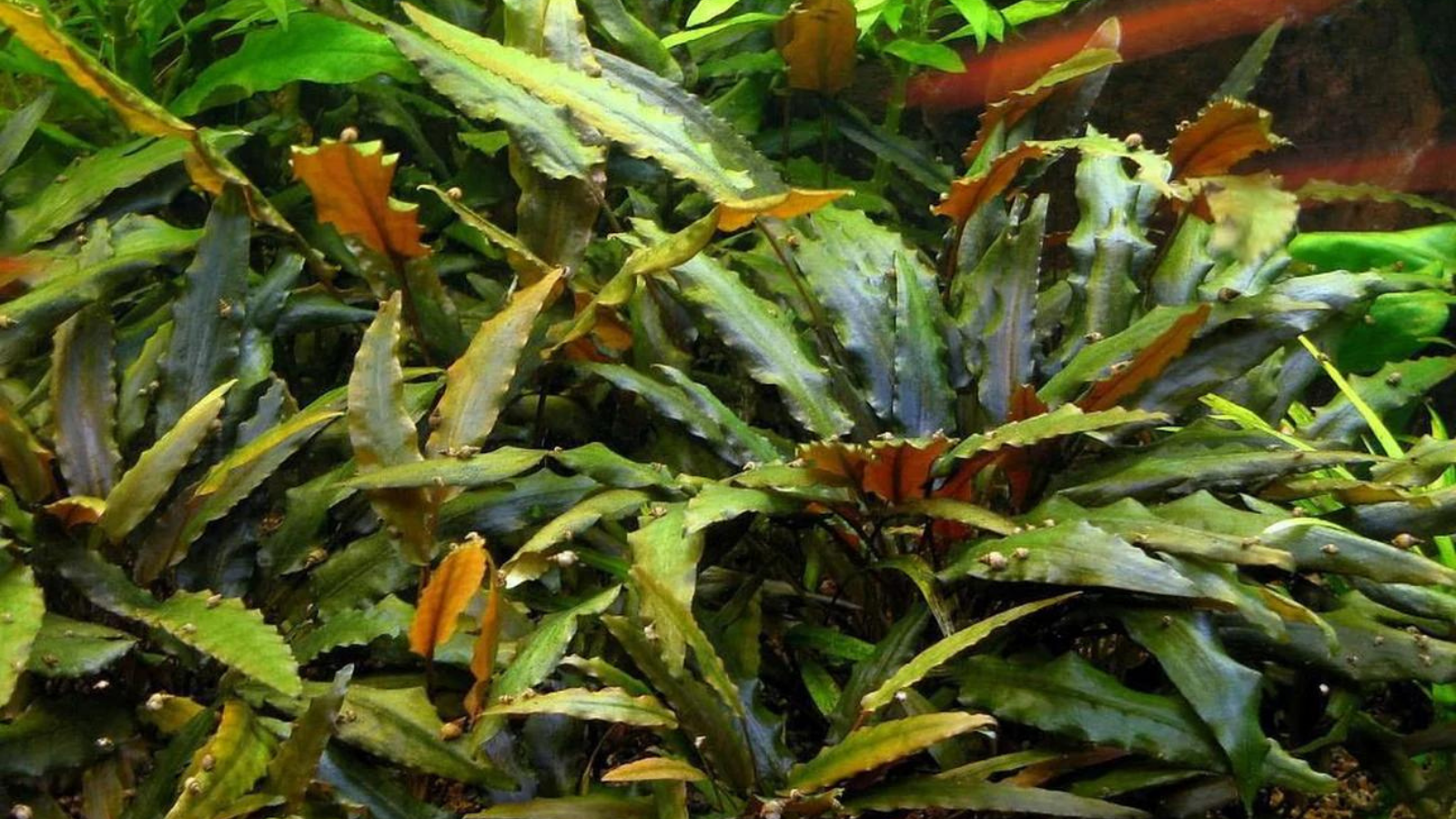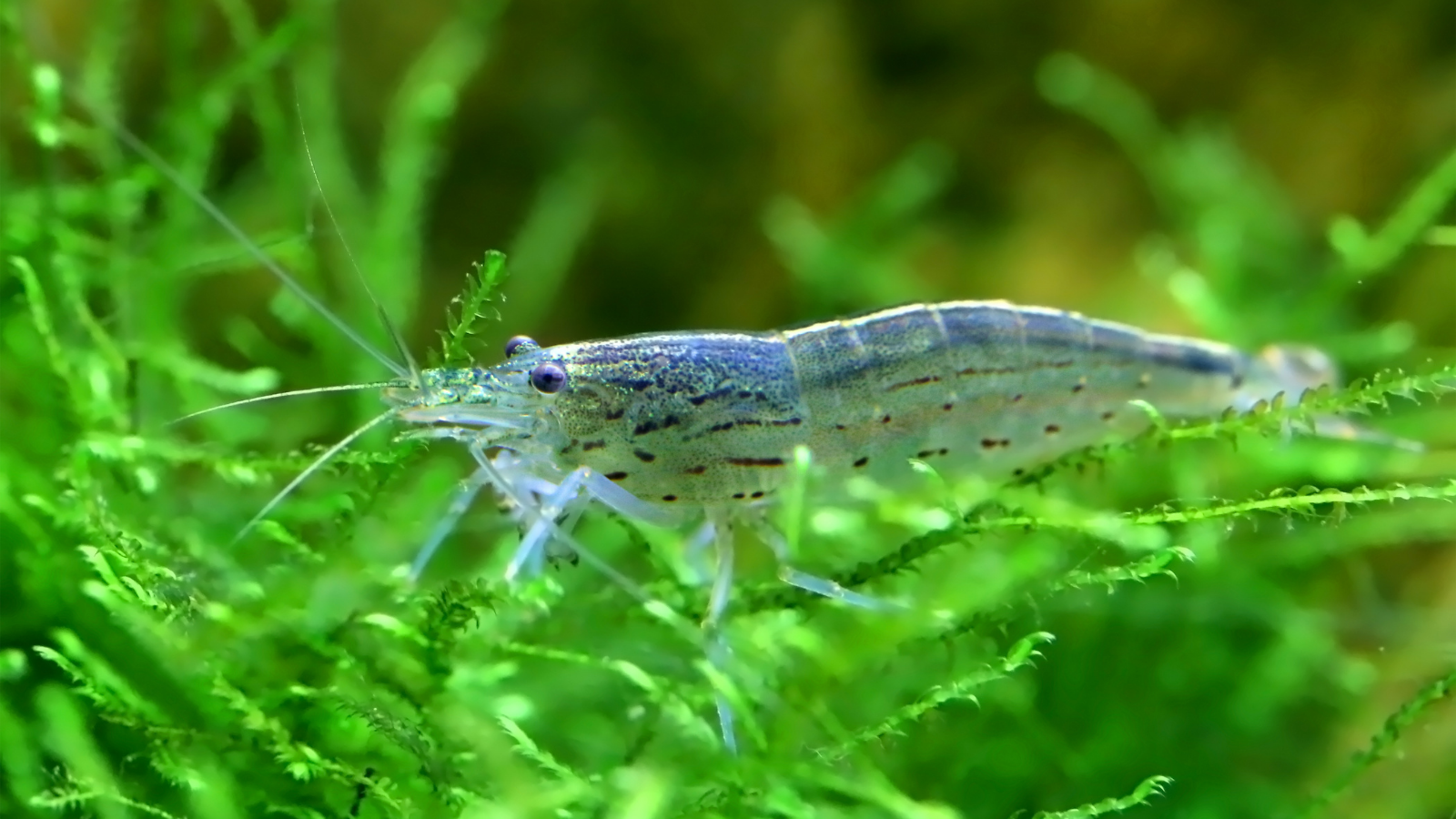Which aquarium plants grow in sand?
When we think of planted tanks, the use of aquarium sand as a substrate is overlooked in favour of a more traditional aqua soil option. Most aquarium plants thrive when in a nutrient-rich substrate while plants in a sandy substrate don't do as well in comparison. Despite these challenges, it is still possible to grow aquarium plants in a sand substrate which allows the aquascaper to utilise the aesthetic benefits of aquarium sand. Read on for a list of live plants that can not only grow in sand, but they will also thrive.

Will plants grow in a sand substrate?
Aquarium plants in sand face several difficulties. One of the main challenges is the sand itself. Sand substrate is much denser than aqua soil. This makes it difficult for any plant to form a strong root structure. Aquarium plants such as the stem plant have delicate roots and in a sand substrate, they will easily become floating plants. Aquarium sand is not a nutrient-rich substrate either. Many plants rely heavily on this source of nutrients and without it, even a very hardy plant will suffer. However, our aquarium hobby always finds ways to overcome challenges like this. Today's fishkeepers have combat the challenges of growing plants in a sand substrate by inserting root tabs directly into the sand wherever the plant's roots will be.
Why use a sandy substrate?
-
Sand substrates are naturally lighter than soils and this allows the aquascaper to achieve a variety of styles and layouts, opening up more possibilities. The use of sand can create various effects in the aquarium when used correctly.
-
Aquarium sand is a common substrate found in nature. When trying to create a natural look in our aquariums, sometimes sand is the best option and especially when creating a biotope aquarium, it is important to maintain as close to nature as possible.
-
Many fish species require a sand substrate to promote their natural behaviours. The Corydoras is a great example of this. Sifting through their substrate daily, looking for food, it is vital that they do not live in an aquarium with larger grain gravel. This can damage their gills as they pass the substrate through, filtering out tiny pieces of food.
Do plants grow in a sand substrate in nature?
The short answer to this question is yes, plants can be found growing straight out of a sand substrate in the wild. This is actually much more common than you think. Most river beds may have gravel but beneath the gravel is a sand substrate or sand mixed with soil, creating high nutrient soil and sand substrate mix. Many tropical locations are found only during wet seasons which means during the dry season, there is bare ground or even grassy fields. Many of which have a sandy mix of soil, gravel and sand. Creating this environment in your aquarium is not difficult if measures are taken to make sure the plants can still receive the nutrients they require.
What kinds of plants are easy to grow in sand?
There are some plant species capable of growing in a sand substrate far more than other plants. Aquarium plants can grow in the sand as long as they receive the correct level of nutrients. Depending on how that plant soaks up nutrients will really give you an idea of how well they will grow in a sand substrate. Aquatic plants that pull most of their nutrients from the substrate will require help to maintain steady growth when in a sand substrate. An aquatic plant with a smaller root network such as the taller stem plant pulls most of its nutrients straight from the water column and therefore continues to grow in a sand substrate as they continue to receive liquid fertilizers, adequate lighting and sufficient co2 supplements.

Stem plants for an aquarium with a sand substrate.
-
Cabomba - A popular aquarium plant from South American plant found in a variety of different water parameters. Most importantly, the Cabomba aquarium plant is very capable of growing in a sand substrate. While it can grow in many conditions, it does best with high lighting, CO2 and slow, gentle flow. The regular dosing of liquid fertilizer is essential and will boost growth and colour. High lighting can aid the red hues and turn your green Cabomba into a vibrant red beautiful plant.
-
Dwarf Hygro (Hygrophila polysperma) - One of the hardiest plants in the hobby and also easily one of the best aquarium plants for a sand substrate. Dwarf Hygro does not have a strong root structure and relies on its leaves for absorbing nutrients directly from the water column. This aquarium plant can grow upwards of 60cm, making it an excellent choice for a background plant but must be trimmed regularly otherwise it will reach the surface and begin to block the light from reaching the lower dwelling plants. Adding liquid fertilizer to the aquarium with each water change will help produce durable green foliage. An additional benefit of this plant is its ability to oxygen the water column.
-
Hornwort - A fast-growing plant that is also a very hardy plant too. Like the aquarium plants listed above, it is an undemanding plant and great for beginners. Hornwort does not rely on a nutrient-rich substrate and is one of those aquatic plants that absorbs its nutrients from the water column. This hardy plant is very good for aquariums with low light but can also grow under medium lighting too. Due to its bushy appearance and fine needle-like leaves, avoid planting indirect flow.

Best aquarium plants for around the aquarium.
Java fern - One of the most popular plants in the aquarium hobby. Java fern has plant roots that do not require planting directly into the substrate like most plants. In a freshwater tank, Java Fern can grow under low light and when healthy, this plant propagates quite often. It is an easy plant to care for as long as you provide some liquid fertilizer. The Java Fern is a versatile plant and can be attached to rocks or wood using a fishing line or thread. Super glue can be used if you plant aquarium plants before filling the aquarium with water. Unlike a stem plant, Java fern cannot have its root structure planted into the sand substrate. Java fern is one of the best aquarium plants for attaching to larger pieces of wood. Once the Java fern plant settles, you will find it is a slow-growing plant. Due to the slow growth rate, java fern is perfect for the mid-ground area of the aquarium. Java fern is a very popular plant and you will find it available in your local fish store. Java fern is perfect for a fish tank housing shy fish.
Amazon Swords - One of those hardy plants that find its way into everyone's planted aquarium at one point or another. Unlike Java Fern, Amazon Swords have very strong plant roots. When planting in a sand substrate, the use of root tabs is vitally important. Root tabs will provide an alternative to liquid fertilizer directly to the roots of the plant. The Amazon Sword is a brilliant background plant due to its wide leaves and bush appearance. It is worth noting that this plant does have a need for high lighting and it is common to experience a certain amount of leaves melting away when first planted but as soon as the plant settles, it will thrive in almost any condition.
Cryptocoryne - These aquarium plants are one of the best plants for the mid-ground area of your aquarium. With its dark green leaves, it is one of the best plants to create character and depth. Additionally, with its slow growth rate, you can rely on the structure of the plant remaining the same while other plants around it grow and change form. Unlike stem plants, Cryptocoryne has a strong root network that it uses for absorbing its nutrients. So these aquarium plants can grow in sand, it is essential to insert root tabs into the sand substrate along with a quality liquid fertilizer. Low light aquariums or even moderate lighting is sufficient. Cryptocoryne is grown out of the water before it arrives at your local fish store and when added to your aquarium, leaves will melt away as the plant goes through a transformation process to acclimate to its underwater form. Maintaining steady water parameters is important when keeping these plants so regular water changes and testing should be your focus.
Other plants
Java Moss - As we discuss the best aquatic plants for an aquarium with a sandy substrate we cannot forget about the legendary Java moss. Without actual roots, java moss can be used in a variety of different ways. We have seen Java Moss left to float about in an aquarium and this is a great option if you are housing breeding fish or shrimps. The Java moss acts as a sanctuary for the tiny offspring. Another method of using Java Moss is to attach it to some branches to create a tree-like structure. Java moss works well in an aquarium with sand substrate and even if placed out of sight, it can grow happily while absorbing any excess nutrients from the water column, which will help to prevent any unwanted algae growth.

What are you waiting for?
Live plants are an excellent addition to any aquarium and just because you use a sand substrate you can still enjoy all the benefits of live plants. Even with moderate lighting, aquarium plants live happily. With the option to add things such as root tabs, your larger mother plant will thrive. As your plant propagates and produces little daughter plants your aquarium will bloom and as long as you maintain steady water parameters, fish tanks with sand substrates can be just as beautiful as any other fish tank with dark green leaves and even partially submerged growth.
Just remember those root tabs.




